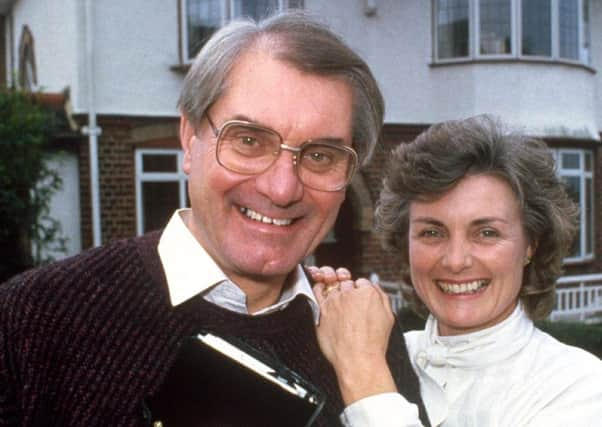Obituary: David Collischon, businessman


David Collischon was a British marketing executive who brought the Filofax to life, turning it into a multi-million pound business while making it one of the best known and must have items of the 80s, particularly amongst the Yuppie fraternity, despite the Financial Times dismissing it as “a souped-up diary”.
Starting out in 1976, Collischon and his wife, Lesley, pictured, launched their company with just £500 and by the time it floated on the stock market, in 1987, it was valued at £17 million. It became a style icon whose cool was indisputably established when fashion guru Paul Smith placed a black filo in his Covent Garden shop window alongside a Montblanc pen. Their business grew rapidly from 30 retail customers to 100,000 including Harrods, Selfridges and other prominent department stores with Collischon himself using three concurrently.
Advertisement
Hide AdAdvertisement
Hide AdHe believed its appeal was universal and “It appeals to the man on the move.”
The company produced an ever-increasing range of inserts from expenses forms and year planners to time zones and to-do lists; they also launched specialist inserts like Pregfax, an insert designed for women trying to conceive, accompanied with a gestation guide, charts, diet sheets and the all-important nursery planner; and Gerryfax, a fun insert aimed at the older man or woman for recording bridge and bowls sessions. Later special deluxe calf-leather editions with extras were produced costing £550. The company also opened a flagship showroom in Mayfair and its share price soared from 120p to 200p.
However, with the emergence of digital technology and doubts about what was essentially a one-product company beginning to emerge the share price took a battering falling to 60p in January 1989.
Collischon admitted that he had paid the price for failing to diversify quickly enough and, in 1990 he sold his remaining shares for £2.7m and stepped down as chief executive. “The company had grown beyond my wildest expectations,” he explained, “but it had also outgrown my personal expertise. I was beginning to develop strong doubts in my own ability.”
Born in King George’s Hospital, Newbury Park, London, Robert David Collischon was the only child of Vera and Robert, a cardboard company general manager.
Growing-up Collischon frequently found himself in trouble, often because of his background - his family were German émigrés - and was expelled twice, before going to Chigwell School, though there too he was regularly bullied and caned. He later described his school days as “a waste of time and irrelevant”, except for modelling and producing a play.
Leaving school at 16 with few qualifications, a family friend got him a warehouseman job at Collins Publishers in Covent Garden; he later worked his way into the PR department where, on one occasion, the launch of Alistair MacLean’s ‘HMS Ulysses’, Collischon showed his model-making talents by constructing a model of the destroyer for the window display.
National Service took him to Malaya and he reached the rank of acting captain in the Royal Army Service Corps, before returning to Collins’ publicity department in 1958; he soon began learning typography and publishing skills, while also handling future best sellers such as Born Free and Dr Zhivago. In 1960, he was appointed manager of Fontana books before moving on to a series of other managerial roles within publishing.
Advertisement
Hide AdAdvertisement
Hide AdFilofax was first introduced from Philadelphia to Britain in 1921 by the publisher Norman & Hill on the suggestion of a secretary, Grace Scurr, who coined the name Filofax, “a file of facts,” and who used it to record customers and suppliers; it sold modestly to journalists, lawyers, doctors and clergymen.
In 1976 Collischon launched Pocketfax and began assembling his own mail shots from the garage. After redesigning and giving the system a make-over, with stylish binders in plain and striking leathers and increasing the range of inserts, as well as highlighting the Filofax’s ability to hold a plethora of items, including credit cards, maps, tickets and pens, sales began to increase. After Filofax, Collischon was involved in other business ventures and chaired the board of finance of the Diocese of Chelmsford, where he was installed as a lay canon of the cathedral.
He chaired the governors of the Davenant Foundation School, Essex, and was a past master of the Worshipful Company of Marketors.
In his free time, he enjoyed sailing, passing his yacht master’s certificate, and regularly took the family boating around the UK, France, Germany, the Netherlands and the Channel Islands. His other passion was model-making which spawned his 1968 book on ‘Furniture Making,’ published as part of a series on home crafts.
Collischon is survived by his wife, whom he married in 1965 and met at a Young Conservatives dance. He is also survived by their three children.